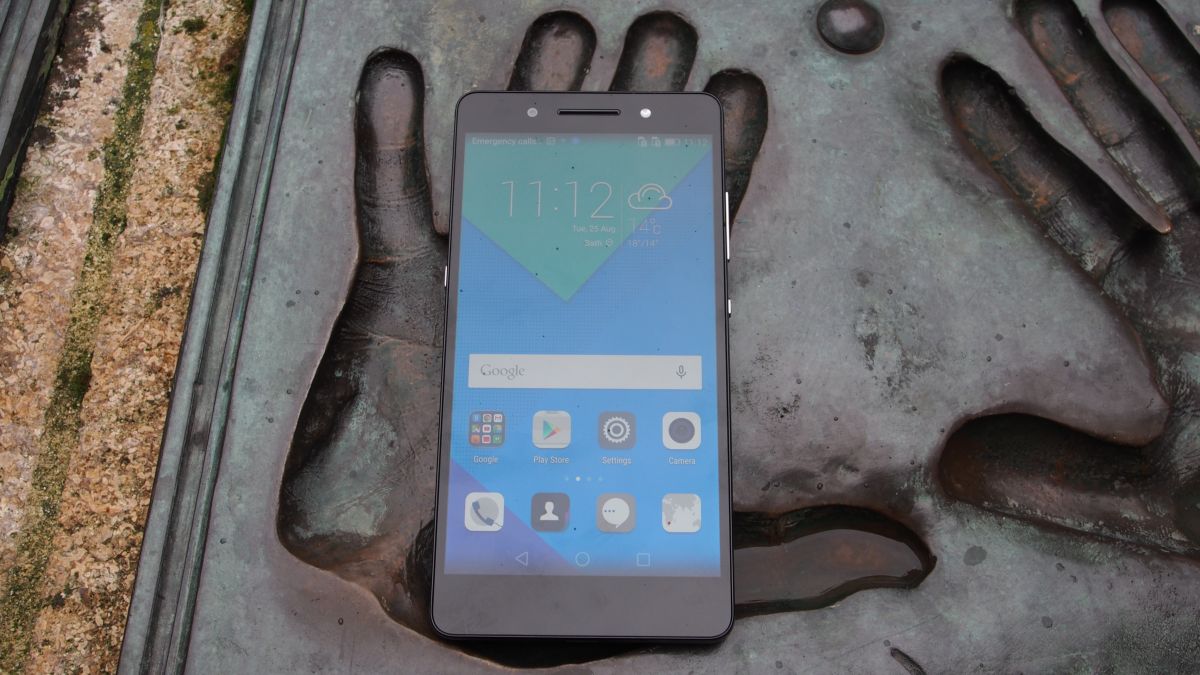
Introduction and design
Update: Huawei is bringing the Honor 7 up to date with the latest Android 6 Marshmallow software. If you live in Europe, you’ll be able to download the update over-the-air now. It comes with features such as doze mode and updated app permissions – but the look won’t change much from the normal Emotion UI.
Huawei is one of the few Chinese handset makers to enjoy a rise in popularity outside its home country. Being linked to Google after collaborating on the Nexus 6P certainly hasn’t hurt, and the launch of the Honor 7 was Huawei going all out to crack the west.
To make its occidental ambitions clear, it’s now easier than ever to pick up a Huawei smartphone, with Huawei’s Vmall online store finally launching in the UK and Europe, enabling you to buy Huawei’s handsets directly from the manufacturer.

Huawei could also be looking at making it easier to walk into a high street store and buy one of its devices, or get one with a contract. At the moment Honor handsets are sold exclusively in Three UK network stores, and are tied to that carrier.
Making its phones more readily available and easier to buy will certainly help Huawei’s standing in the West, and to get people even more tempted by its latest handset it’s offering a limited deal that knocks €50 (around £36, $56, AU$78) off the asking price if you join the ‘Honor Club’.
Even when the offer ends, the Honor 7 will still offer excellent value for money, joining its compatriots the One Plus 2 and the Meizu M2 Note in offering impressive hardware for low prices, with a price tag starting at £249.99 (around $393, AU$547).
Considering that the Honor 7 comes with an octa-core processor, a choice between 16GB and 64GB of storage and 3GB of RAM, that’s not a bad price, with a fingerprint scanner and 20-megapixel camera sweetening the deal even further.
This isn’t a budget phone with all but the most basic features cut out, but a decent handset for a compelling price with a few neat features and innovations thrown in as well.
From a western standpoint, the Honor 7’s biggest competition is from the recently released Moto G (2015), which comes in two flavours: the 1GB RAM and 8GB storage version for £179 ($179, AU$250), or the 2GB RAM/16GB storage version for £209 ($219).
So does the Honor 7 continue the winning streak of Chinese handsets by offering a great experience for a lot less money? Read on to find out.
Design
At first glance the design of the Huawei Honor 7 is rather straightforward and basic, and more than a little familiar. It reminded me of a cross between the Apple iPhone 4 and the Xperia Z3+, which means that while it’s far from an ugly handset, it doesn’t exactly wow either.
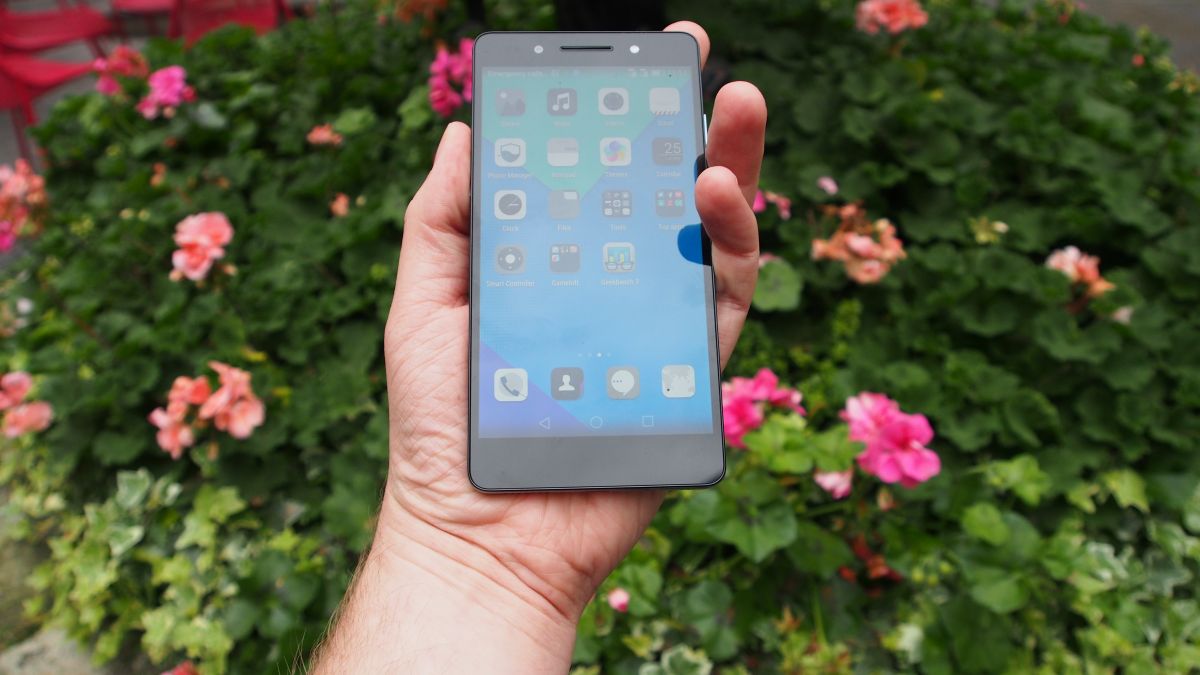
With smartphones becoming increasingly competent on the inside, we’re often looking for devices that offer something a bit different on the outside, and while I wasn’t expecting any premium, paradigm-shifting innovations like the Samsung Galaxy S6 Edge‘s curved screen, it would’ve been nice to be confronted with a design that didn’t make me think “I’ve seen this before”.
However, while the front of the Honor 7 seems derivative of Apple’s and Sony’s offerings, the back is quite different, with a slightly curved brushed aluminium back which feels nice to hold, as well as giving the handset a sturdy feel. I wouldn’t worry about dropping this phone as much as one with a glass front and back.
The back of the Honor 7 is also home to the rear camera and LED flash, and just below that a fingerprint scanner. Its location towards the centre of the back makes it more comfortable to reach when you’re holding it in your hand than fingerprint scanners on the front of the body, although this also means it’s easier to accidentally touch.

Back to the front of the device, where the 5.2-inch 1080p screen is surrounded by two thin bezels on either side that keep the Honor 7 thin enough to hold comfortably, with dimensions of 143.2 x 71.9 x 8.5mm and a weight of 157g.
The bezels above and below the screen are quite a bit thicker, however. While I’m willing to forgive Huawei for the thick top bezel, as it holds the front-facing camera, LED flash and speaker for phone calls, the bottom bezel seems like wasted space.
This is because there are no buttons, speakers or even logos here. Sure, the extra room is probably taken up with hardware underneath the body, but it makes the Honor 7 look a little plain.
It also means that the speakers for ring tones and media are relegated to the bottom of the body, so they can often be covered by an errant palm, making the sounds coming out of them seem muffled; it’s a shame that the empty space of the lower bezel wasn’t used for front-facing speakers.
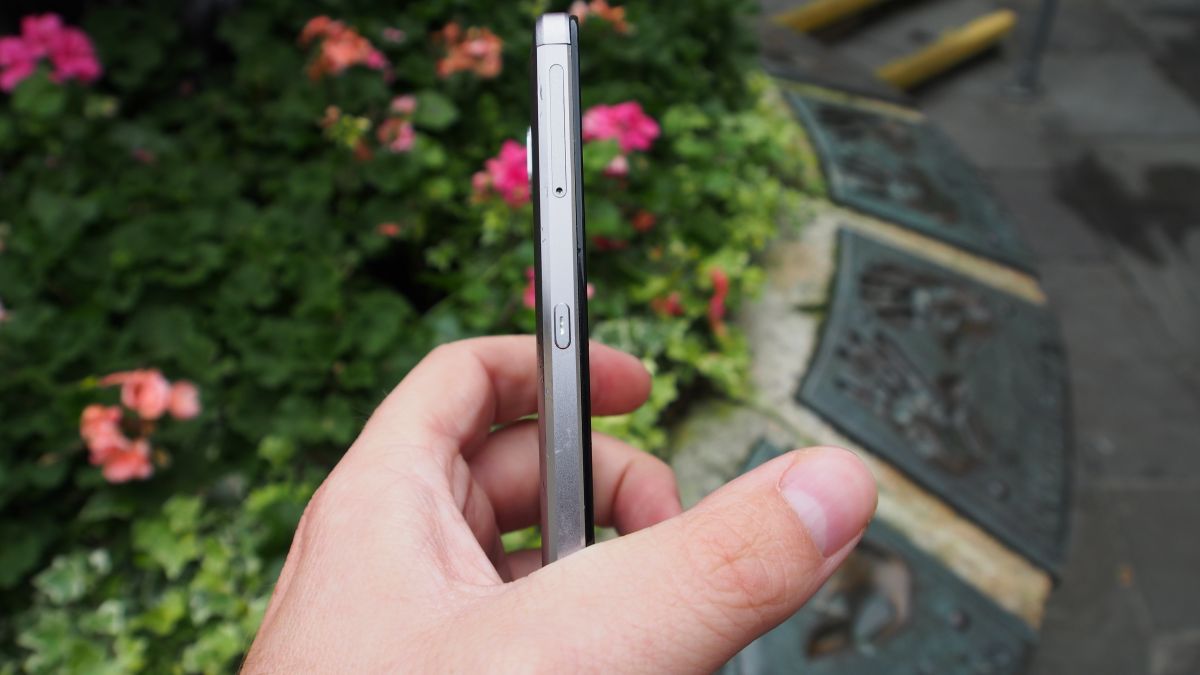
On the right-hand side of the handset are the volume rocker and power button, which are again in easy reach if you’re using the Honor 7 one-handed. There’s a single button on the left-hand side of the body, and at first I thought this was a dedicated camera button – but on pushing it, nothing happened.
However, holding it down opened up Google Now, which I’m not too sure I like. On other handsets with stock Android I was happy enough to swipe left to get to Google Now when I needed it, and I never felt that I was missing a physical button to bring it up. I also accidentally pressed it on a couple of occasions, which was pretty annoying.
Some Google Now addicts might love this addition, but I feel that it’s a waste of a button. The volume rocker, meanwhile, acts as a physical camera shutter button when the Camera app is open.
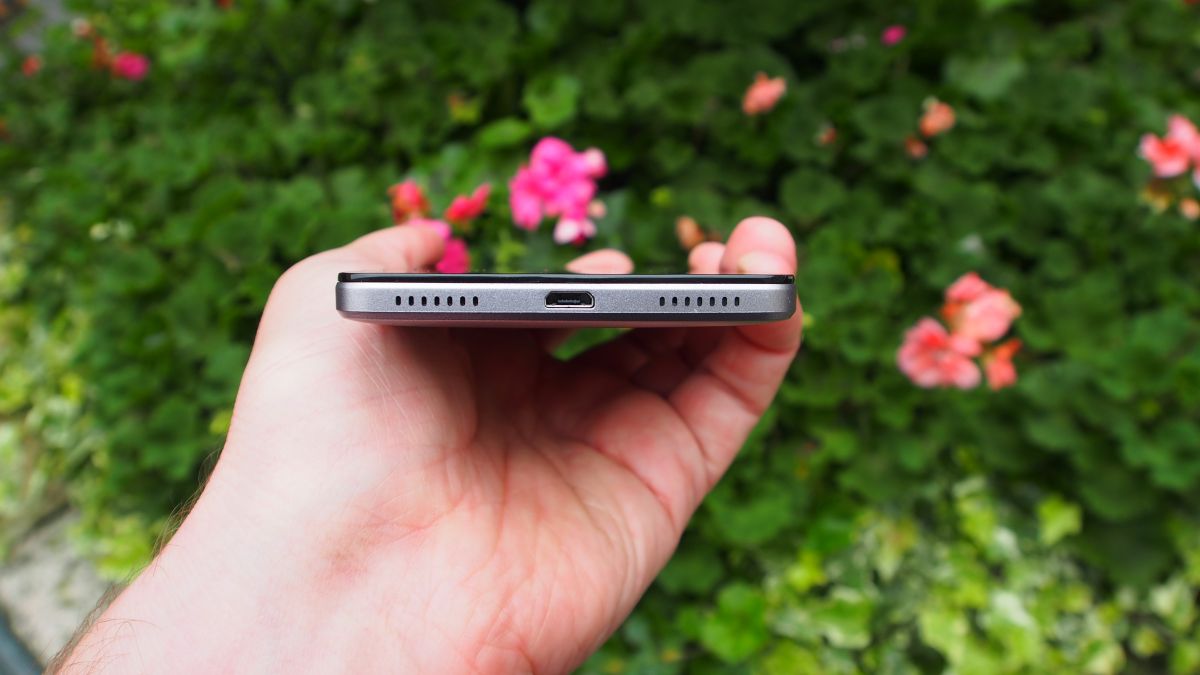
Finally, the micro USB port resides at the bottom of the chassis – there’s no USB Type-C here – with a headphone jack at the top.
Overall, the design of the Huawei Honor 7 is solid if uninspiring. It’s certainly not an ugly phone, but it does little to stand out from the crowd either – which could be a problem if Huawei is planning on making a splash with this device and bringing it to the high street.
With more opportunities for potential customers to take a look at the device and hold it in their hands, Huawei could have pushed a bit harder for a design that really leaves an impression, so although the design isn’t bad, I still feel it’s something of a missed opportunity.
Key features
Unlocking with a fingerprint
The Huawei Honor 7 is one of a growing number of handsets that include biometric sensors, enabling you to securely unlock the smartphone with your fingerprint.
The feature is great in theory, as it combines improved security (people are less likely to spoof your fingerprint then crack your pin code), with ease and convenience.
Although it’s good to see such advanced features appear on more affordable phones, unfortunately the fingerprint scanning implementation on the Honor 7 is a bit hit and miss.
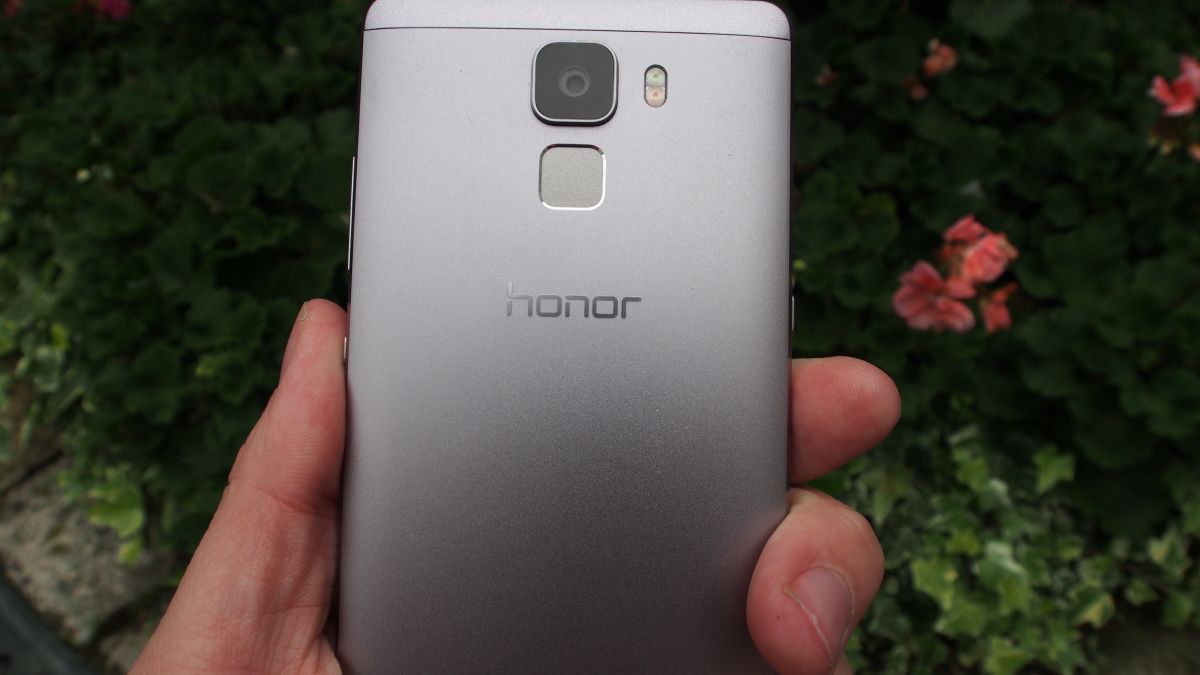
First the good news: the fingerprint scanner is located on the back of the Honor 7, just below the rear camera, and this position makes it easy to reach when you’re using the phone with one hand.
I found that my finger naturally fell on the fingerprint scanner when I picked it up, which meant that when the scanning worked, the Honor 7 was unlocked and ready to use before I even knew it.
Another plus point is that configuring the fingerprint scanner is straightforward, with easy-to-follow instructions on how to register your fingerprint. You can register a number of fingerprints as well, which is useful if you share your phone with your partner.
The fingerprint sensor vibrates when touched, with gives helpful feedback when using the feature, and it can also register gestures, such as a swipe down with a finger to bring down the top menu – it’s a nice touch for accessing it with one hand, although you’ll need the other hand to select the options from the menu anyway.
However, there are issues with the sensor as well. For fingerprint scanning to be really easy and convenient it has to work flawlessly and consistently, and unfortunately the Honor 7’s fingerprint scanner falls short.
Despite the ease of registering my fingerprint, when I tried to use it to unlock the phone I was repeatedly told that the fingerprint wasn’t being recognised, so I went back and recalibrated the sensor.
The second time it worked much better, but frustratingly it still refused to register my fingerprint on occasion. This meant that sometimes I’d pick up the phone, press my finger on the sensor and all was well with the world; other times I’d keep on trying until the Honor 7 gave me a 30-second timeout, forcing me to enter my PIN as normal.
Sadly, for an easier life it meant that I got into the mindset that I’d have to use my PIN to unlock the phone and not depend on the flakiness of the fingerprint scanner. It’s a real shame, as this was one of the features I was looking forward to most, but its unreliability means that you’ll probably end up unlocking the Honor 7 the old fashioned way more often than not.
The gesture recognition of the sensor was equally spotty, with it sometimes working fine, and other times not working at all.
Voice control
In a world with Google Now, Siri and Cortana, voice control isn’t that revolutionary, but I still have to give props to Huawei for giving it a shot with its own implementation – especially considering that it doesn’t have the resources of Google, Apple or Microsoft.
When setting up the phone you can turn on ‘Voice Wake Up’, which enables you to find a misplaced Honor 7 by using your voice. Before using the feature (which can only be used in English, but gives you the option of US, British and Australian variants) you have to utter the phrase “Dear Honor” a few times for it to calibrate, while trying to avoid the bemused stares of anyone within earshot.
Once this has been done the Honor 7 continually listens out for the “Dear Honor” command, with all the pros and cons that entails.
So, it means that if you’ve misplaced your Honor 7 you can walk around where you think you last left it saying “Dear Honor, where are you?”. If it hears your pleas it will say it’s nearby, and will play sounds and flash lights as well, which is actually pretty handy. If it’s not nearby, however, you’ve not only lost your phone but potentially your dignity too.
However, the fact that it’s continually listening to you also means the Honor 7 is prone to interrupting conversations. A number of times I was speaking to someone only for the Honor 7 to butt in, asking me which contact I wanted to ring. Sometimes it would interject with a huffy “I didn’t understand that. Goodbye” as well. As far as I’m aware none of the conversations I was having before the Honor 7 joined in used the words “honour” or “dear”.
So – and this is starting to look like something of a recurring theme – the voice activation feature has some nice ideas but is let down by the way it’s implemented, resulting in an inconsistent overall experience.
20-megapixel camera
The Honor 7’s big selling point is that it has a good set of specs considering its price, and if there’s one bit of hardware that will make you sit up and take notice it’s the 20-megapixel rear camera.
This is a fair bit more capable than the Motorola Moto G (2015)‘s 13MP snapper, while the Meizu M2 Note, another competitor of the Honor 7, also has a 13MP camera.
Of course, more megapixels does not automatically mean better pictures, but if you use your smartphone for regularly taking snaps then the Honor 7’s camera could be a deciding factor if you’re thinking of taking the plunge.
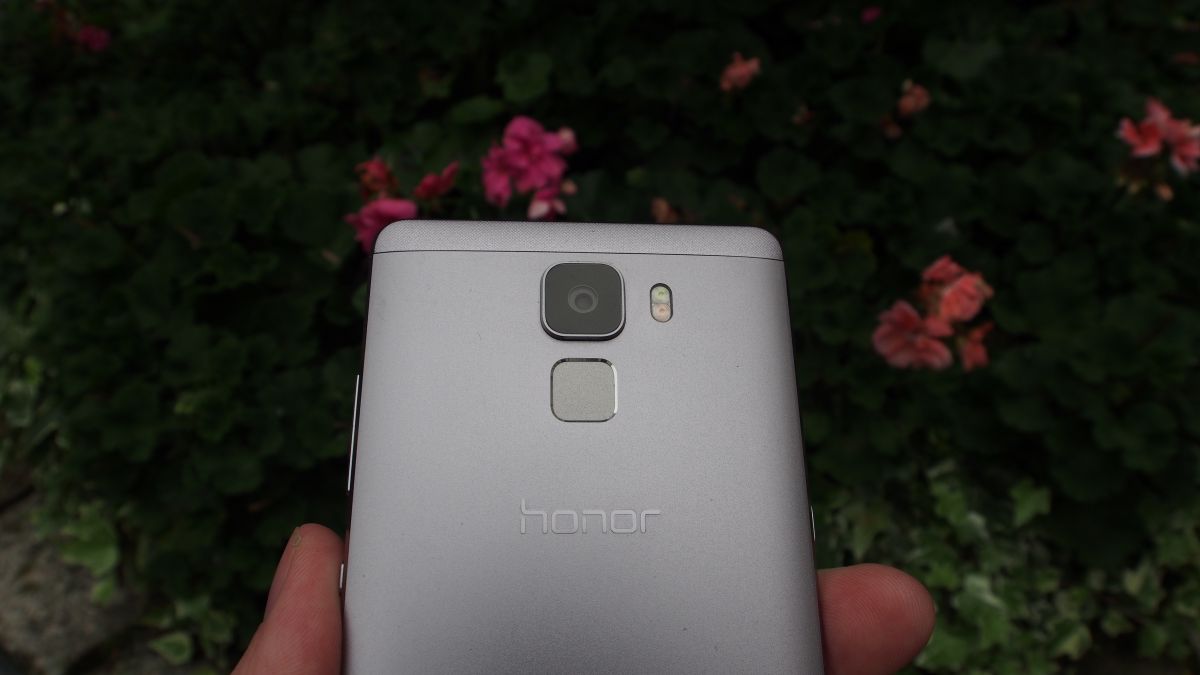
I’ll go into more depth about whether or not the camera lives up to expectations later on in this review, but it looks like mid-range smartphones will have to up their game in the camera spec war if they want to remain competitive.
Performance and interface
The Huawei Honor 7 has a mid-range price tag of £249.99 (around $393, AU$547), but it comes with some pretty impressive specifications.
It’s powered by Huawei’s own HiSilicon Kirin 935 chipset, replete with an octa-core processor that’s made up of four cores running at 2.2GHz and four running at 1.5GHz. This means that when you want to conserve battery life and aren’t pushing the Honor 7 too hard it will use the slower cores, while if you’re using the handset for more intensive tasks it’ll switch to the speedier ones.
After running the GeekBench 3 benchmark test, the Honor 7 scored 3629 for its multi-core performance. This is a fair bit better than the 1590 score the Motorola Moto G (2015) achieved.

The Meizu M2 Note, perhaps the closest competitor to the Honor 7, gets a slightly better – though still not as impressive – score of 2693 with its Mediatek octa-core 1.3GHz CPU.
The Honor 7 also comes with a very healthy 3GB of RAM, which is pretty good for smartphones around this price point, with the 16GB version of the Motorola Moto G (2015) and the Meizu M2 Note having just 2GB.
This relatively generous RAM offering, combined with the decent GeekBench scores, should mean the Honor 7 is a solid performer, and from my time with the handset I can say that’s mainly true, with Android 5.0 Lollipop by and large performing well.
Performance wasn’t flawless, and there were occasions when the Honor 7 paused and became unresponsive, though these were thankfully rare.
However, I did experience one particularly nasty crash, with the onscreen buttons becoming unresponsive for around 20 seconds. Some messages, such as one informing me about a network error, would also sometimes stay on screen for a while, which became annoying.

Although the Honor 7 comes with Android 5.0 Lollipop installed, it also has Huawei’s own EMUi 3.1 interface overlaid. This brings a number of new features and tools to the current version of Android, while keeping the Material Design aesthetic of Google’s stock version.
You can also updated it to Android 6 Marshmallow software, which brings with it new features and a bunch of bug fixes.
The default background is a dynamic, Material Design-inspired wallpaper that moves as you scroll through the home page. The custom icons from Huawei are also nice – they’re flat with a Material Design look, yet with a monochrome (with occasional small details in other colours) presentation. The effect is very nice.
The lock screen is quite a bit different from Android’s default, and displays random stock photos along with the time, and although it can look a little ‘busy’ at times, I quite liked it.
EMUi doesn’t just bring aesthetic changes, however, with Huawei adding its own spin on how you can control Android – with particular attention paid to using the phone one-handed.
Although I’m a big fan of the stock Android experience, I do like seeing phone manufacturers try new things, and in many cases what Huawei brings to the table with EMUi works very well. However, there were occasions where I got a bit frustrated.
For example, when you tap just below the Wi-Fi icon in the quick menu on standard Lollipop this would open a small menu enabling you to switch Wi-Fi networks. Here it just turns Wi-Fi on and off, and you need to go into settings to change the network.
Huawei has also seen fit to include a number of apps pre-installed on the Honor 7, including Twitter, Facebook, WIPS Office and Highlights. Highlights is described as “your portal for free games and apps”, and to be blunt, at the moment it doesn’t work.

Clicking on the recommended apps currently just brings up a large image that isn’t suited to the phone’s screen. For games, it again looks like the page hasn’t been formatted properly, with text appearing in a number of different fonts, but at least it’s usable. Sort of.
It doesn’t help that the game recommendations aren’t that great, but clicking on the name takes you through to the Google Play Store to download your chosen game.
Hopefully the Highlights app will be fixed when the Honor 7 releases, as at the moment it detracts from an otherwise pretty polished experience.
There are also some pre-installed games, and a Smart Controller app that turns the Honor 7 into a universal remote for your gadgets.
The Phone Manager app is perhaps the most useful of the pre-installed software. It scans the phone and gives you a list of things you can do to optimise the handset, such as closing down apps to free up memory and deleting unnecessary files to give you more storage space.
Even after only a few days of use the program found things to tidy up – and after lengthy use of the handset this program could make a real improvement to performance.
You can have the app automatically perform all the tasks with just one tap, or you can tap on each task to perform it individually. Even better, you can also manually perform the tasks yourself, giving you full control over what’s deleted or closed.
While the other apps Huawei has included aren’t particularly impressive or inspiring I found the Phone Manager to be well worth trying out, and if you find your Honor 7 is beginning to feel a bit sluggish after a few months of use, running the app to clean up the handset could result in some real improvements to performance.
Battery
The Huawei Honor 7 comes with a non-removable 3100mAh battery, which on paper should offer a decent amount of life between charges.
In practice, however, I found that the Honor 7 didn’t do particularly well, with the battery dropping to 81% after just two-and-a-half hours of moderate use.
By 11:35 in the morning the battery had dropped to 70%, with the Honor 7 just about managing a full day of use before needing a charge.
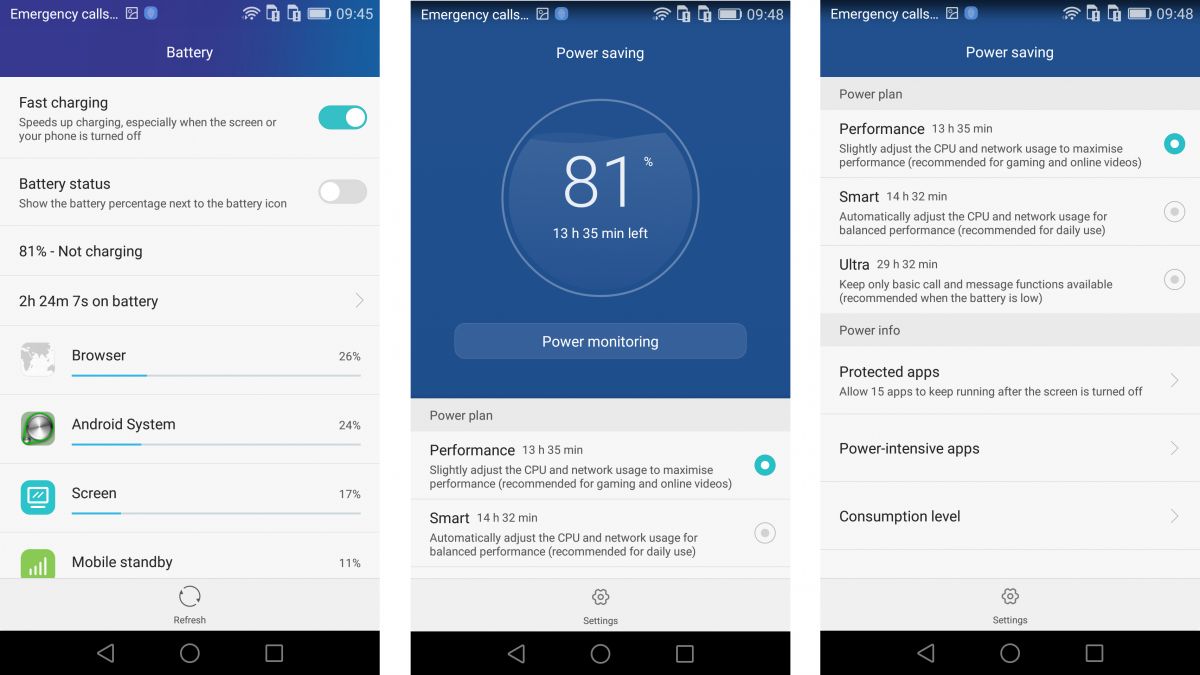
However, it did cope well with some tasks where other smartphones fail. Browsing the internet, which can usually drain the battery pretty sharpish on some phones, didn’t impact battery life too badly – although this might be because I was using the default browser that comes installed on the Honor 7, rather than the more resource-intensive Chrome.
Using our patented video benchmark, which involves playing a looped high-definition video for 90 minutes with the screen on full brightness, the battery of the Honor 7 dropped 33%, which is quite a large amount. For comparison, the Meizu M2 Note has the same-capacity battery but drops slightly less, showing 27% depletion.
It’s not a stellar performance battery-wise, then, but the Honor 7 does have some additional tricks up its sleeve that can help to improve the battery life quite dramatically.
Huawei has included a number of in-depth power-saving and monitoring tools that give you lots of information about which apps and hardware are taking up the most battery.
The battery-saving features in the Honor 7 go well beyond what most manufacturers offer, and it’s a darn sight more than stock Android’s tools.
It means that, with some careful research and tweaking, you can tailor the Honor 7 to get even more battery life out of it by identifying the main culprits that are draining the power pack.
Of course, not everyone is going to have the time or inclination to meticulously go through and find out what the worst battery-hogging apps are, and for this reason there are also three power profiles which you can select, which will automatically configure the Honor 7’s performance to optimise battery use.
‘Performance’ makes use of the faster cores of the Honor 7’s CPU to deliver the fastest performance possible, while sacrificing battery life. Meanwhile ‘Smart’ balances the CPU and network usage of the phone depending on what you’re doing, so that when the phone isn’t being used for intensive tasks it will use less power.
Finally the ‘Ultra’ mode turns off everything except what’s needed for phone calls and basic functions. This necessarily limits what you can do with the Honor 7, so it’s best you leave this option as a last resort for when your battery is running very low, but it does do a very good job of giving you some much-needed extra juice.
A nice touch is that an estimate of how much battery life you’ll have remaining is displayed next to each power plan. So, when I checked at one point the estimate for Performance was 15 hours 41 minutes, for Smart 16 hours 58 minutes and for Ultra 29 hours and 32 minutes. If these estimates were correct it suggests that you can almost double the battery life of the Honor 7 by switching to the Ultra setting.
So overall the battery life of the Honor 7 wasn’t stellar, and fell short of some of its competitors, but I feel that Huawei has redeemed itself somewhat by including a range of in-depth battery tools that go some distance in improving the Honor 7’s battery performance.
The essentials
If you do a lot of talking on your smartphone then first of all, congratulations – that’s very old-school of you. Secondly, the Honor 7 could be of interest as it supports dual SIM cards, which means you can swap between networks and tarrifs without having to open up the phone.
It’s certainly handy if you have separate mobile contracts for work and leisure, as it means you don’t necessarily need two phones. The same is true if you have a SIM card dedicated to making phone calls when you’re abroad.
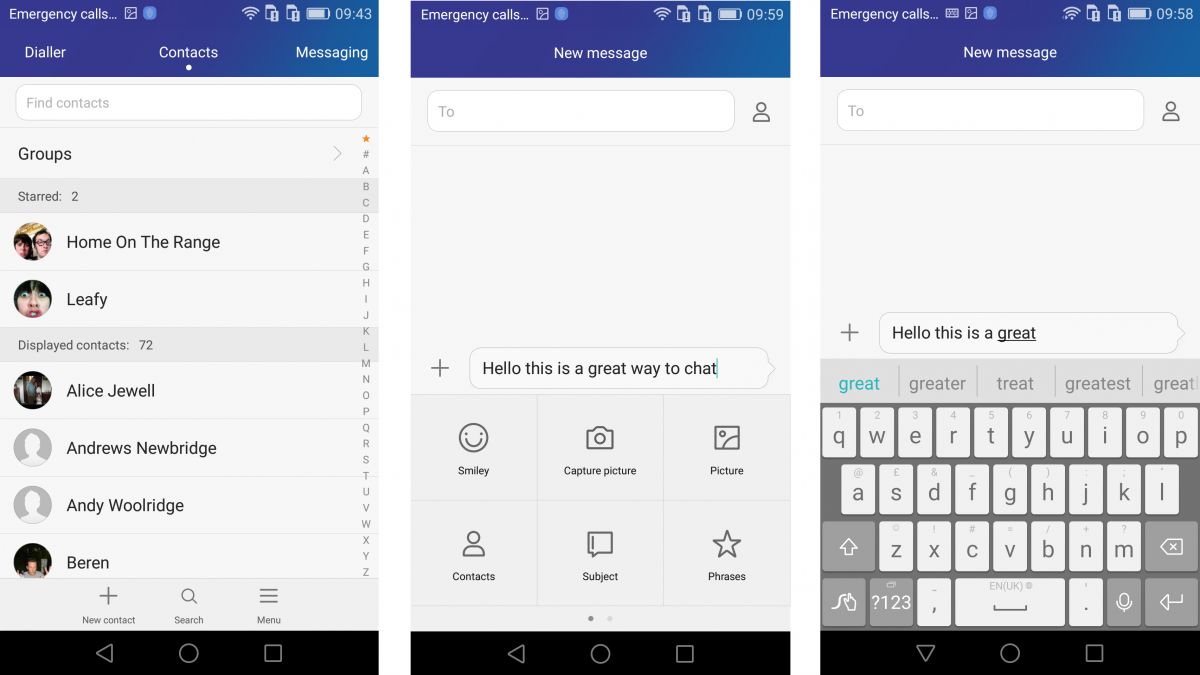
Call quality is perfectly fine and the Phone app, which has been given an overhaul to match Huawei’s EMUi interface, is straightforward to use, with the Contacts app looking and behaving a lot like the one found in stock Android.
The Messaging app is a bit basic, but it does the job for text messages. The Honor 7’s on-screen keyboard is okay, although sometimes it misses key presses – this can be a problem for fast typists like me, who then have to go back and retype what they were trying to say, but it’s also annoying when entering your PIN to unlock the handset when the fingerprint sensor inevitably flakes out.
The keyboard can also feel a little cramped on the screen, although a number of input methods are supported, so you can use swipe gestures to type, and the auto-complete feature does a good job of guessing the words you’re typing, which makes using it a viable option.
You can also press the + symbol to quickly add emoticons, as well as photos, videos, audio and more to your messages. You can send common phrases such as “Sorry, I am busy now” from a list of presets, and it also makes adding contacts to messages easy, enabling you to send a contact’s details to someone else as vCard or plain text.
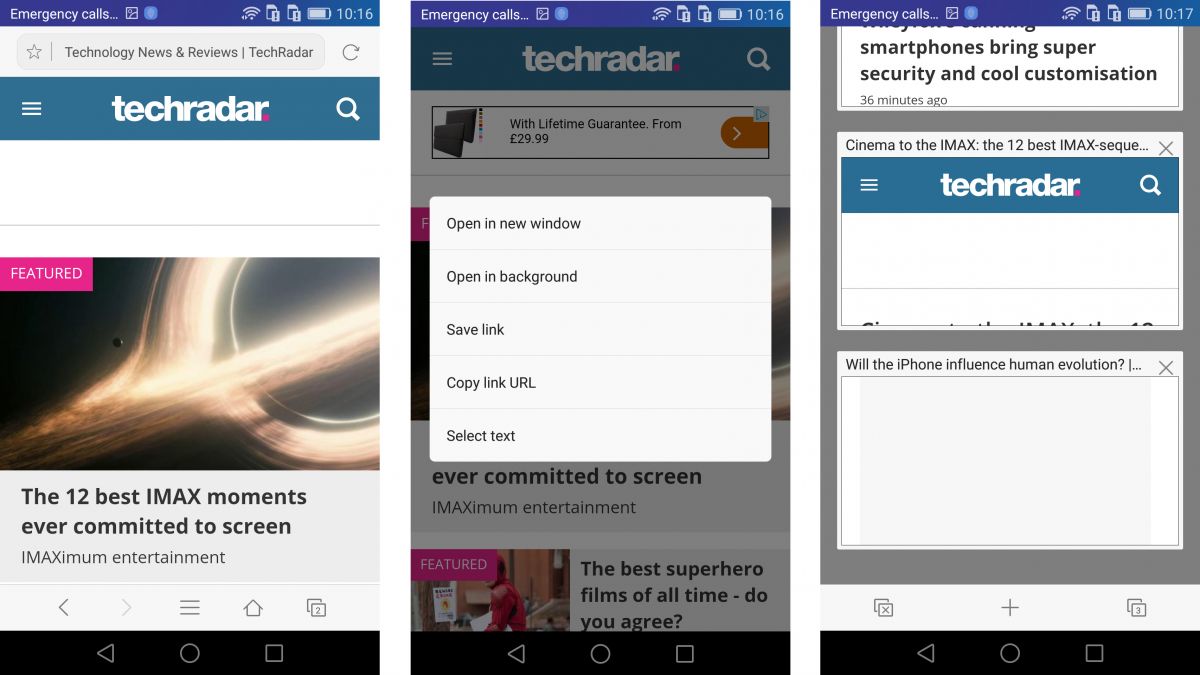
For internet browsing, Honor 7 comes with both Google Chrome and its own browser pre-installed, and while the latter does a good job it doesn’t feel quite as snappy as Chrome – images can take a while to load, for example, which slows down the whole experience no matter how robust your internet connection is.
Huawei’s commitment to making it as easy as possible to use the UI one-handed is present in its browser – as you scroll down web pages an opaque icon of an up arrow appears, and tapping this takes you back to the top of the page, which is handy.
The browser doesn’t support tabs though, so if you want to open a link to read later you have to open it in a new window – a bit annoying for tab addicts like me, but to be fair windows are treated a bit like tabs anyway, as you can click an icon to bring up an overview with thumbnails of the open pages.
After using the browser for a while I didn’t hate it – but I quickly switched over to Chrome, which gives a smoother experience overall. One thing I noticed while browsing was that the body of the Honor 7 didn’t get hot, which has been a problem with other recent devices.
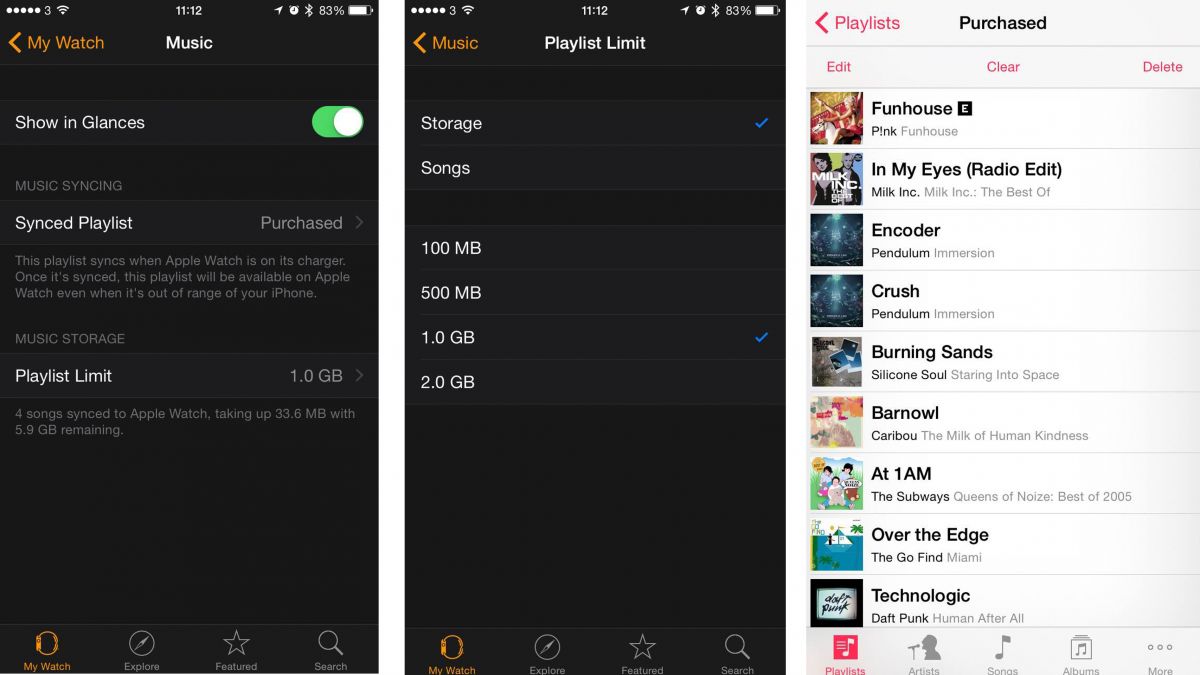
The music app is another essential phone feature for many users, and the app included with the Honor 7 is straightforward and easy to use.
Unlike some music apps it doesn’t connect to online sources and just uses local content, which is kind of refreshing, as it doesn’t make you feel like you’re missing out if you don’t have loads of subscriptions to various services.
You can select a sleep timer so that the music is turned off after a certain amount of time, and there’s an option to display a song’s lyrics on the home screen or the lock screen. This doesn’t really work, however, and just displays an ugly text box with ‘Music player’ on it. Tapping this brings up a see-through widget for media playback, which doesn’t look very nice.
Once again this is an unfortunate reminder that despite the Honor 7’s EMUi interface looking quite polished in places, in other respects it feels unfinished.
Sound quality through both the speakers (when they’re not being muffled by a palm) and headphones is decent, although the Honor 7 lacks the quality and punch of Sony handsets such as the Xperia M4 Aqua.

Watching videos on our smartphones is also now an essential experience for many people, and the Honor 7 proves itself to be capable here as well, with a Video app that is again quite simple to use, and only plays videos that are stored on your handset.
The controls are easy to grasp, although playback isn’t the smoothest I’ve seen on a phone. Full 1080p footage is displayed well enough on the Honor 7’s full high-definition screen, but it doesn’t feel exceptional, with details in particular failing to pop.
Overall the Honor 7 does a decent job of covering the basics, but it never feels like the handset is excelling in any aspect. Considering the price, this might not be surprising, but mid-range handsets that concentrate on one or two areas, such as offering great media experiences, are available, and make the Honor 7 look a little moribund.
Camera
So far my time with the Honor 7 has shown me that this is a generally capable mid-tier smartphone that doesn’t really excel at anything. So when it came to testing out the camera, despite its impressive-sounding 20MP sensor I wasn’t expecting too much.
This is mainly because a high megapixel count does not always lead to fantastic image quality, and I’ve been let down in the past with handsets that shout from the rooftops about their pixel-stuffed snappers, only for their photos to end up being nothing special.
However, both during the process of taking photos with the Honor 7, and when viewing the results, I was very pleasantly surprised.

The camera app itself is straightforward to use, with the various tools and options laid out in an easy-to-access way. Depending on whether you have the front or rear camera selected, some options are removed, which makes things easier.
Regular photos taken with the Honor 7 outdoors were very good, with a good level of detail present in the snaps I took. While the colours don’t look too vibrant that’s due more to the fact that it was a fairly overcast day, with the British summer disappointing once again.
Not only were colours reproduced pretty accurately, the image was sharp enough to avoid it appearing blurry when zoomed in, and without the introduction of extra image noise.

Close-up shots using the Honor 7’s camera showed off just how good it is at capturing details, and for the price I think this is one of the best smartphone cameras you can get.

Indoor shots also show good levels of detail, although here a lack of vibrancy in colours is more noticeable; however with a bit of tweaking in the app, or with a photo-editing program on your computer, images can be easily improved.

Selfie shots using the 8-megapixel front-facing camera are also very impressive, with the resolution higher than that of many front-facing cameras found on phones at this price range.
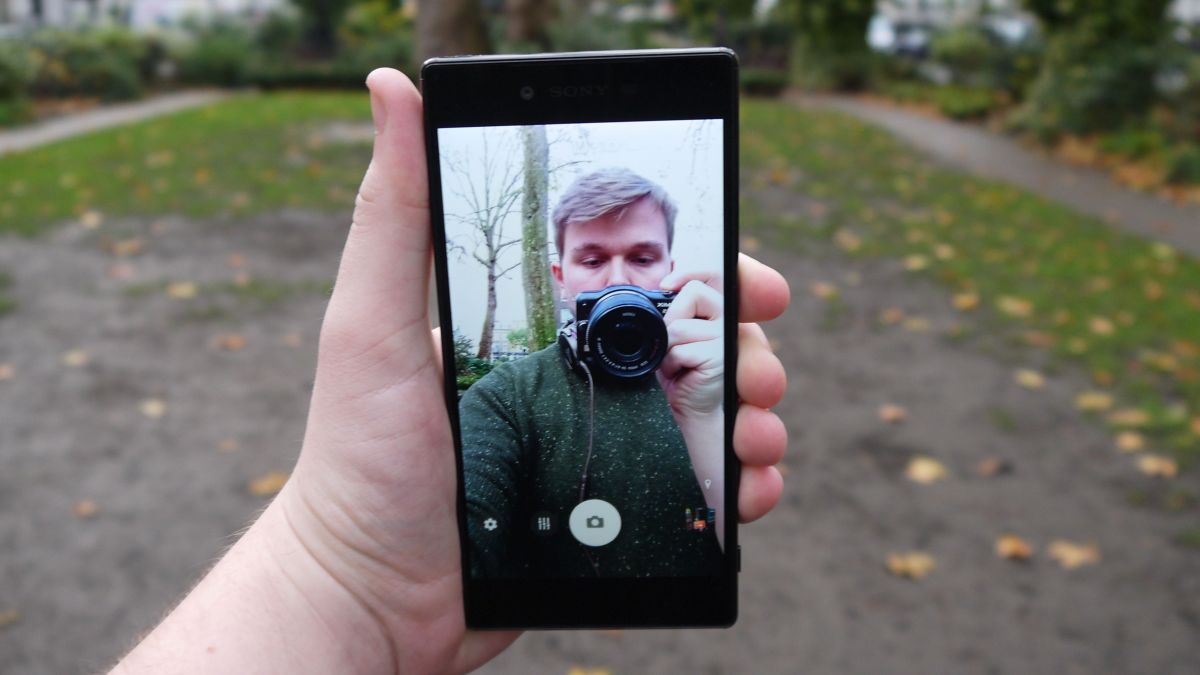
Both cameras have a range of presets and shooting modes to try. You can give your selfies a makeover, for example, and you can add a number of Instagram-like filters to your shots as you take them.
You can also record 1080p video with the Honor 7, and again I was impressed with the results. The video I shot was detailed and playback was smooth, with hardly any judder. Some optical – or even digital – image stabilisation would have been nice to make the footage a bit less shaky, but I feel a bit guilty for even suggesting that when otherwise you’re pretty spoiled by the quality on offer here.
The front and back cameras of the Honor 7 proved to be by far the best things about the handset, and I was very impressed with the quality of images from both.
The excellent cameras are backed up by a very good camera app that made composing and taking shots a pleasure. If you’re a keen mobile photographer who doesn’t want to spend a great deal of money, but still wants excellent snaps, then I would recommend ignoring Sony’s lofty claims about its more expensive Xperia handsets, and instead seriously consider the Honor 7.
Verdict
The Honor 7 is a funny phone to review in some respects. I have to give Huawei props for not just churning out a regular no-frills mid-ranger that does the job, but with nothing to get excited about. Instead, the Honor 7 is packed with interesting and innovative features, such as a fingerprint scanner, voice control, a custom UI aimed at making one-handed use easier, and a powerful camera.
However, despite Huawei clearly thinking outside the box, the Honor 7 suffers from not following through on its promise, mainly due to uneven implementation. This results in such flaws as a fingerprint scanner that doesn’t always work, and certain parts of the interface seeming unfinished.
We liked
The cameras of the Honor 7 are an obvious highlight, with image quality that far exceeded my expectations. While other aspects of the Honor 7 didn’t really impress much, both the 20MP rear-facing and 8MP front-facing snappers offer excellent photos considering the price of the handset.
Speaking of price, Huawei has pitched the Honor 7 at a very tempting level – and there’s plenty of horsepower for the amount of cash you’re putting down.

We didn’t like
Some parts of the Honor 7 feel a little undercooked, which is a real shame. I like the ambition Huawei is showing with this handset, but ropey parts of the user interface, along with a fingerprint scanner that isn’t all that dependable, lets this handset down.
Verdict
Overall the Honor 7 is a decent mid-range smartphone with some lofty aims – some of which it nobly fails to achieve. Sadly, a fail is a fail regardless of how noble it may be, so despite its promise there isn’t quite enough to make the Honor 7 stand out from the crowd – something that Huawei needs it to do if it’s to make it big in the west.
One aspect of the Honor 7 does stand out though – both its cameras are excellent. This means that despite it not being the most exciting smartphone in the world, if you want an excellent smartphone snapper the Honor 7 is well worth considering.
Otherwise, I’d advise looking at the slightly more expensive OnePlus 2 for a more well-rounded user experience.
First reviewed July 2015
Source: techradar.com










































how to install google apps? pls. help
Like others here I feel this had been a half hearted review. I purchased this phone a few weeks ago after my nexus 4 finally gave up. The summary at the beginning is a good place to start.
The ´for´ section is accurate as far I my experience goes.
The ´against ´ section seems to be completely inaccurate.
EMUI is certainly a big departure for me compared to stock Android and, recently ZLauncher .
But it's not rubbish. There is an app drawer feature called hidden apps which does the same job. And EMUI has a reason for being. It constantly is trying to save battery power. It give you total control on what apps can do when you are not using them. Its pretty brilliant and I easily get more than a day and a half of normal use.
Fingerprint scanner is accurate and fast, even with my dermatitis affecting a good section of my forefinger
Design is certainly premium, not budget. Its a really good looking phone with a decent weight. Not sure what more the reviewer expects for £250?
And as I said previously, battery life is superb. And that's without getting EMUI to shut down apps and restrict network access when they are not being used
In summary. Brilliant phone if you don't mind either learning how to use EMUI or you don't mind downloading another launcher
I am interested between Honor 7 and LG G3. I only want take photos, email and surf the web. What do you think is the best option to take photos between these models? thx!
Not a very good article. He failed to notice that the right hand key he pressed for "Google Now" is a multifunction key which can be programmed to start different apps , at your choice. For a reviewer that is a serious offence. He would be better suited to review much more obvious things, like, I don't know, a cooking pot?
Paid to review ? I wonder !
AVG I remember you saing you had a wee spy wth them. didn't load it up incase
Completely failed to notice that the left button is much more useful than just a google now button. If the reviewer had looked closely at the settings at all he would have noticed that the button can be customised to do lots and lots of things.
comparing it with the moto g ? get outta here.
Interestingly, other reviewers find the fingerprint scanner working perfectly and then, uninspired design, LOL at that
3/5 stars?
Bitch please.
scanner is shite
nice smartphone .., i love Huawei ! .., hope the management will provide me a sample of this wonderful smartphones .., paging the Huawei CEO, thanks much
"churning out a regular no-frills mid-ranger"
pls find a new job. this is the complete opposite of a regular no-frills mid-ranger. also you're the only reviewer that seems to have any issue at all with the fingerprint scanner